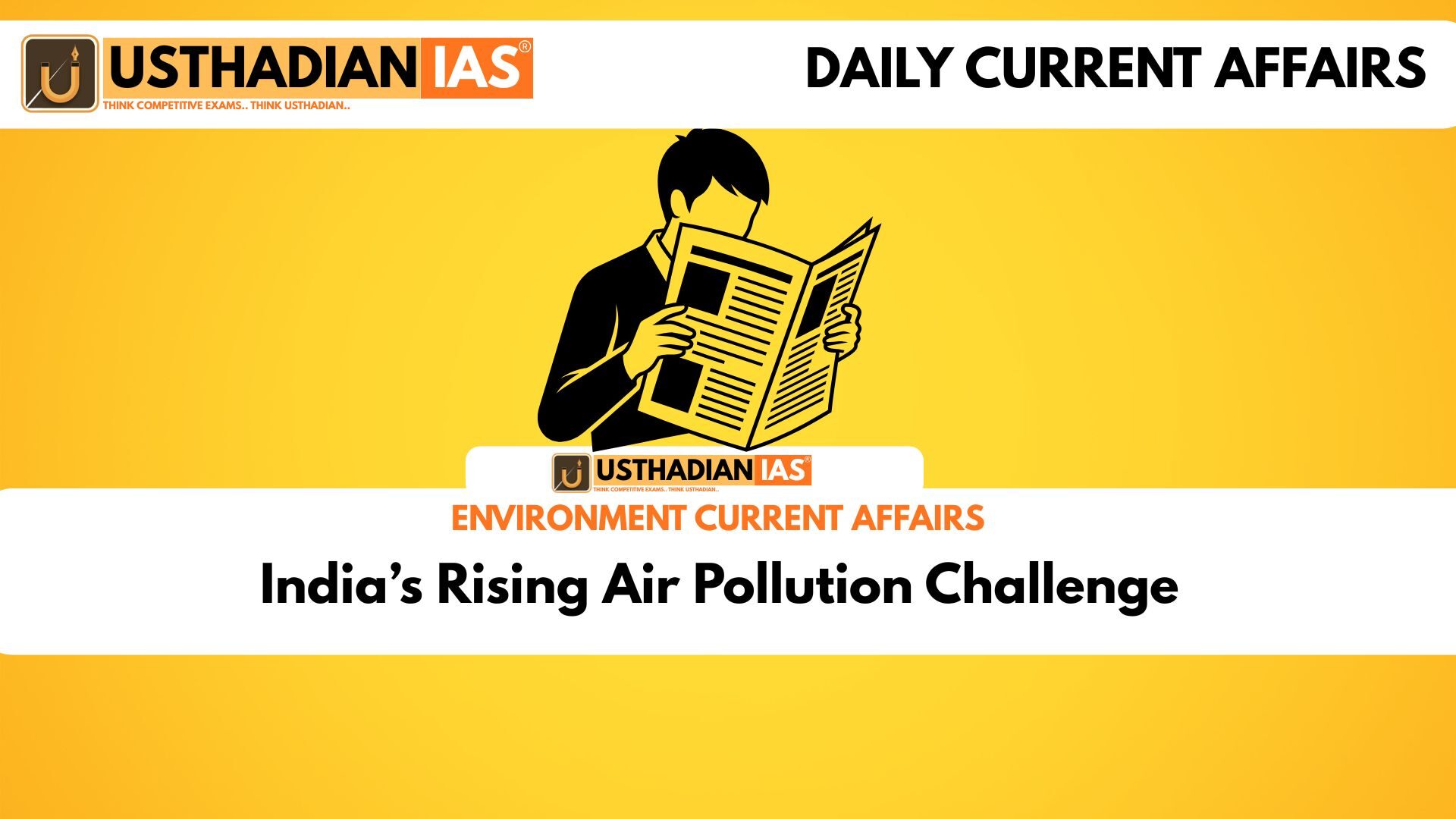Overview of the State of Global Air Report 2025
India’s Rising Air Pollution Challenge: The State of Global Air (SoGA) 2025 Report, released by the Health Effects Institute (HEI) and the Institute for Health Metrics and Evaluation (IHME) in the United States, provides an alarming global assessment of air quality and health impacts. The report highlights that air pollution continues to be a leading cause of premature deaths globally, with India accounting for over half of global pollution-related mortality.
Static GK fact: The Health Effects Institute (HEI) is an independent non-profit research organization established in 1980, supported jointly by the U.S. Environmental Protection Agency and motor vehicle manufacturers.
India’s Air Pollution Burden
The report reveals that India recorded approximately 2 million deaths in 2023 due to air pollution. This represents a 43% increase since 2000, marking a serious escalation in health-related risks. India now contributes 52% of the total global deaths linked to polluted air, underlining the severity of the crisis.
Static GK Tip: According to the WHO, air pollution is the fourth leading risk factor for global mortality, after high blood pressure, tobacco use, and dietary risks.
PM2.5 and Ozone Exposure
The study found that 75% of India’s population is exposed to PM2.5 levels exceeding WHO standards. These fine particles penetrate deep into the lungs and bloodstream, causing heart and respiratory diseases. Furthermore, India ranks third globally in exposure to ozone pollution, which aggravates asthma and reduces lung function.
PM2.5 sources include vehicular emissions, industrial activities, biomass burning, and construction dust, while ozone pollution results from reactions between sunlight and pollutants like nitrogen oxides.
Policy Response and Government Interventions
India has implemented several measures such as the National Clean Air Programme (NCAP), launched in 2019, which aims to reduce PM2.5 and PM10 levels by 20–30% by 2024 in major cities. However, the report suggests that despite these efforts, challenges persist due to rapid urbanization, industrial expansion, and dependence on solid fuels in rural areas.
Static GK fact: The NCAP covers 131 non-attainment cities across India identified by the Central Pollution Control Board (CPCB).
Role of Pradhan Mantri Ujjwala Yojana
The report highlights the positive impact of the Pradhan Mantri Ujjwala Yojana (PMUY), which provides LPG connections to women from Below Poverty Line households. Modelling studies indicate that transitioning all PMUY households to exclusive LPG use could prevent over 150,000 premature deaths annually by eliminating indoor air pollution from solid fuels.
Static GK Tip: PMUY was launched in 2016 under the Ministry of Petroleum and Natural Gas to ensure clean cooking fuel access to rural women.
The Way Forward
Experts recommend stricter implementation of emission standards, promotion of renewable energy, urban green infrastructure, and public awareness campaigns. Enhanced air quality monitoring, coupled with state-level accountability, remains essential to achieving sustainable improvement.
Static Usthadian Current Affairs Table
India’s Rising Air Pollution Challenge:
| Topic | Detail |
| Report Name | State of Global Air Report 2025 |
| Published By | Health Effects Institute (HEI) and Institute for Health Metrics and Evaluation (IHME) |
| Key India Statistic | 2 million deaths in 2023 due to air pollution |
| Increase Since 2000 | 43% rise in mortality |
| India’s Global Share | 52% of pollution-linked deaths |
| PM2.5 Exposure | 75% population above WHO limits |
| Ozone Exposure Rank | Third highest globally |
| Major Government Programme | Pradhan Mantri Ujjwala Yojana (PMUY) |
| Potential Lives Saved by LPG Use | 150,000 annually |
| National Policy | National Clean Air Programme (NCAP), launched 2019 |








